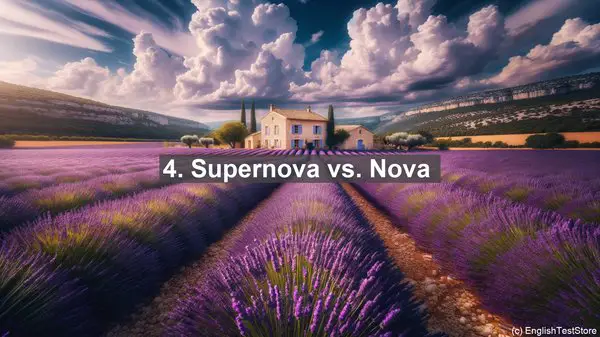Introduction
Welcome to today’s lesson on astrochemistry. In this lesson, we’ll be discussing the top 10 commonly confused words in this fascinating field.

1. Astrobiology vs. Astrochemistry
Astrobiology is the study of life in the universe, while astrochemistry focuses on the chemical processes and compounds in space. While related, they have distinct areas of focus.
2. Nebula vs. Galaxy
Nebulae are vast clouds of gas and dust, often the birthplaces of stars. Galaxies, on the other hand, are massive systems of stars, gas, and dust, held together by gravity.

3. Exoplanet vs. Planet
Exoplanets are planets that orbit stars outside our solar system. Planets, on the other hand, refer to celestial bodies that orbit a star, including those in our solar system.
4. Supernova vs. Nova
Both are stellar explosions, but the key difference lies in their brightness. Supernovae are incredibly bright, often outshining entire galaxies, while novae are relatively less luminous.
5. Redshift vs. Blueshift
These terms relate to the shifting of light wavelengths. Redshift occurs when an object is moving away, causing the light to stretch towards the red end of the spectrum. Blueshift, on the other hand, happens when an object is moving closer, causing the light to shift towards the blue end.
6. Ion vs. Atom
An atom is the basic unit of matter, consisting of a nucleus and electrons. When an atom gains or loses electrons, it becomes an ion, carrying a positive or negative charge.
7. Spectroscopy vs. Spectrometry
Both involve the study of light, but they differ in their approach. Spectroscopy focuses on the interaction of light with matter, while spectrometry measures the intensity and distribution of light.
8. Interstellar vs. Intergalactic
Interstellar refers to the space between stars, while intergalactic refers to the space between galaxies. Both are vast, but on different scales.
9. Isotope vs. Element
An element is a substance made up of atoms with the same number of protons. Isotopes, on the other hand, have the same number of protons but differ in the number of neutrons.
10. Red Giant vs. White Dwarf
These are different stages in the life cycle of a star. A red giant is a massive, aging star, while a white dwarf is the remnant of a low-mass star that has exhausted its nuclear fuel.
